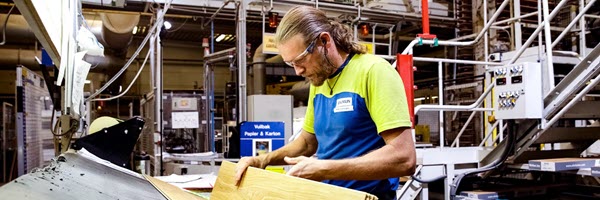- I tested a Pixel Tablet without any Google apps, and it's more private than even my iPad
- My search for the best MacBook docking station is over. This one can power it all
- This $500 Motorola proves you don't need to spend more on flagship phones
- Finally, budget wireless earbuds that I wouldn't mind putting my AirPods away for
- I replaced my Linux system with this $200 Windows mini PC - and it left me impressed
Securing digital manufacturing—from a vicious to a virtuous circle – Cisco Blogs

What do factory operations (OT) and IT teams have in common? They both want a reliable and efficient industrial network to increase production outputs, reduce downtime, and protect the enterprise from cyber attacks.
But beyond that, each team has its own objectives. OT is dealing with crises like supply chain disruptions and the relentless push for sustainable manufacturing, increased productivity, and faster cycles. To counter these challenges they’re investing in plant floor digitization and industrial internet of things (IIoT) applications. IT, on the other hand, is tasked with protecting the enterprise from cyber threats. More cautious than OT, IT enforces security policies that can sometimes restrict free communication flows, defeating the OT team’s objectives.
Not entirely trusting IT, operations teams can be tempted to work around them to connect new cloud services or even a remote access server of their own. This so-called “shadow IT” introduces security vulnerabilities that can put the entire organization at risk, as we saw in the February 2021 cyberattack on a Florida water treatment site. When trust between OT and IT erodes, teams stop collaborating, OT’s modernization efforts are stymied, the attack surface remains uncontrolled, and the whole enterprise suffers. It’s a vicious circle.
From contention to collaboration
Enterprise IT teams can gain the OT team’s trust by giving them something they really want but don’t have—complete industrial network visibility. Just turn on the Cisco Cyber Vision sensor that’s built into our industrial switches and routers. Cyber Vision automatically generates a detailed inventory of everything connected to the network and their communication patterns. IT gains precise understanding of the security posture. And OT gains insights into what’s causing downtime or operational issues.
By providing visibility into the industrial network, Cyber Vision sets the stage for a fruitful IT-OT collaboration. A shared understanding of the network helps both parties define priorities and build trust. Both teams have something to gain by working with the other. The vicious circle becomes a virtuous circle.
Cyber Vision in action
This is exactly how Unilin, a leading manufacturer of flooring materials, created a secure digital manufacturing standard for its 21 global factories. In most factories, plant managers were already testing or deploying new industrial IoT technologies to deal with supply chain issues and reduce costs. Without effective cybersecurity, these technologies can threaten manufacturing operations—and also the enterprise network. Unilin’s IT team needed visibility into what was going on.
As explained in this new case study, Unilin’s IT team built a relationship with OT by sharing operational insights from Cyber Vision. In just a few minutes, Cyber Vision showed the reason an industrial process was not performing up to par—a configuration change to a machine controller. Without Cyber Vision, troubleshooting would have taken days with a negative impact on production outputs and the bottom line. The plant managers quickly understood the benefits of Cyber Vision and agreed to let IT deploy it in other parts of their network.
A win-win for IT and OT
Unilin’s IT team now has complete visibility into the industrial network’s security posture. The IT and OT teams hold weekly meetings to review network issues and discuss new projects. As trust develops, they are also starting to work together on more advanced security measures, such as segmentation. As Pascal Pauwels, Unilin’s Director of infrastructures explains, “We couldn’t do this without the help of the OT team. They know the industrial processes and the machines. But they couldn’t do it without IT. Building reliable and secure networks is our expertise.”
It’s easy to get started
To start building a trusted relationship with the factory operations team, just turn on the built-in Cyber Vision sensor in our industrial network devices. Share insights with OT to help them troubleshoot faster, improve network performance, and increase operational efficiency. At the same time, you’ll learn more about the OT network’s security posture so you can reduce the attack surface. It’s a win-win.
Next steps
Share:

